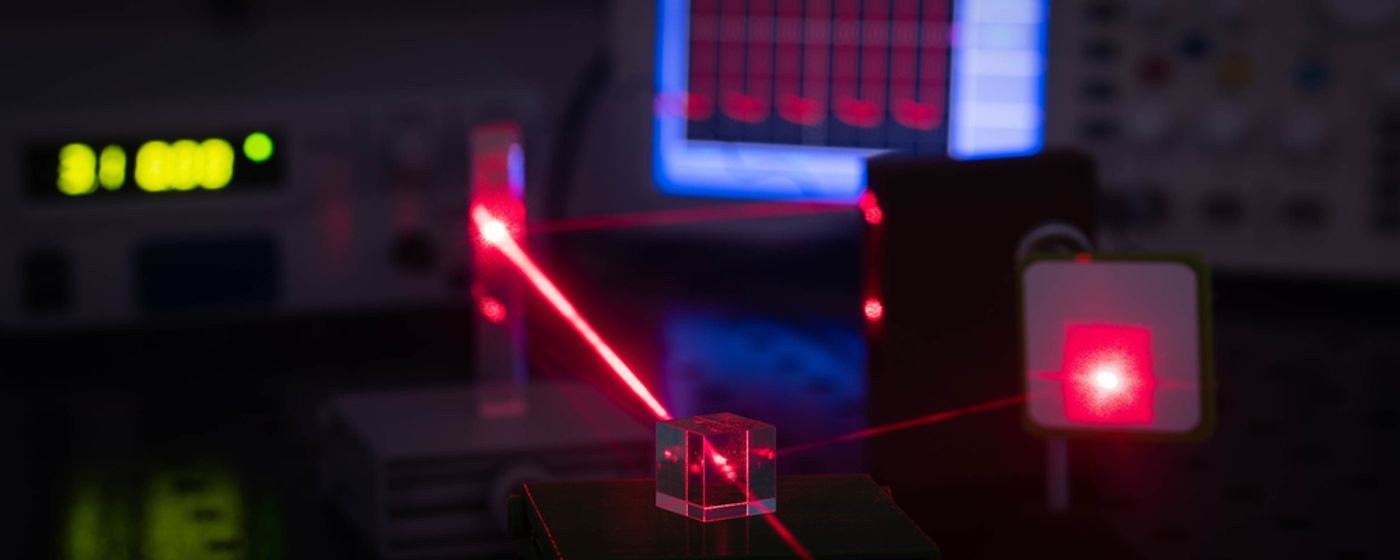A Closer Look at Lasers: Components & Lab Applications
Nearly everyone, even those outsides the sciences, has encountered at one point or another a “laser”— Light Amplification by Stimulated Emission of Radiation. Lasers produce narrow, uniform beams of light and have become ubiquitous in today’s world with applications in everything from grocery store check outs to atomic imaging. Despite the degree to which society relies on these devices, it’s not uncommon for the layperson to understand very little about a laser’s function, construction, and possible applications. Below, we’ll take a closer look at each of these areas with a special focus on laser components and laboratory uses.
As the acronym suggests, lasers work to amplify light. Part one of the process requires an energy source. This could be a flash of light or an electrical current. Energy from this source is passed into what’s known as “gain media,” the portion of the laser capable of producing light photons. Electrons in the media are excited by the energy input and move into a higher orbital state. Eventually, these electrons fall out of their heightened state and produce a photon, a particle of light.
Because the gain media of a laser is enclosed in a special chamber (an “optical resonator”) with mirrors on each end, the light produced continues to bounce back and forth. These additional passes of the photon through the media can stimulate the release of additional photons nearly identical to the original and create a positive feedback loop. Eventually, the concentration of the light is sufficient to pass through one end of the optical resonator and a laser light beam is born.
While most lasers’ basic operating principles are the same, differences in their construction lead to variations in the duration, wavelength, energy, focus, etc. of the light beam produced. As mentioned above, the energy input can vary and therefore impact function. The design/length of the laser chamber also effects the production of light waves. Perhaps most critical, however, is the selection of gain media. Gain media can take many forms, though most lasers employ either a solid or a gas. Depending on the type of beam desired and its eventual application, different media may be selected in construction.
For example, it is common to encounter lasers equipped with either a crystalline or glass medium. These are then spiked, or “doped”, with special ions that interact with the medium to produce different beam characteristics. Of particular importance in practical applications are the laser beam’s emission wavelength and power. Crystalline media are typically doped with transition metals and glass media are doped with rare earth metals which produce varying ranges of beam wavelengths and power.
Two popular forms of crystalline laser media are Neodymium Doped Yttrium Aluminum Garnet (Nd:YAG) and Yb-doped Potassium Gadolinium Tungstate Yb:YAG. These possess high power capabilities but offer only a small range of possible beam wavelengths. Glass materials, in contrast, can produce a broader range of beam wavelengths due to their comparatively less rigid structure but typically cannot support as much power as crystals. Companies such as ESKMA Optics sell a variety of both types of media which can be customized to meet specific application needs.
Indeed, the numerous ways to customize a laser have made these devices incredibly useful in the sciences and elsewhere. Chemists and physicists can employ lasers to slow chemical reactions and atomic particles for study; surgeons use lasers to perform tissue removal or corrective optical procedures. Even still, new applications and innovations surrounding lasers are emerging. In recent years, for example, scientists have developed a handheld laser that can be used to destroy cancer tissue without harming surrounding healthy cells. They have also successfully utilized a laser spectroscopy system to detect viruses like SARS-CoV-2.
For the last 60+ years, lasers have greatly impacted the world we live in. And as their designs, components, and functions continue to evolve, they are sure to continue shaping the world for many years to come.









